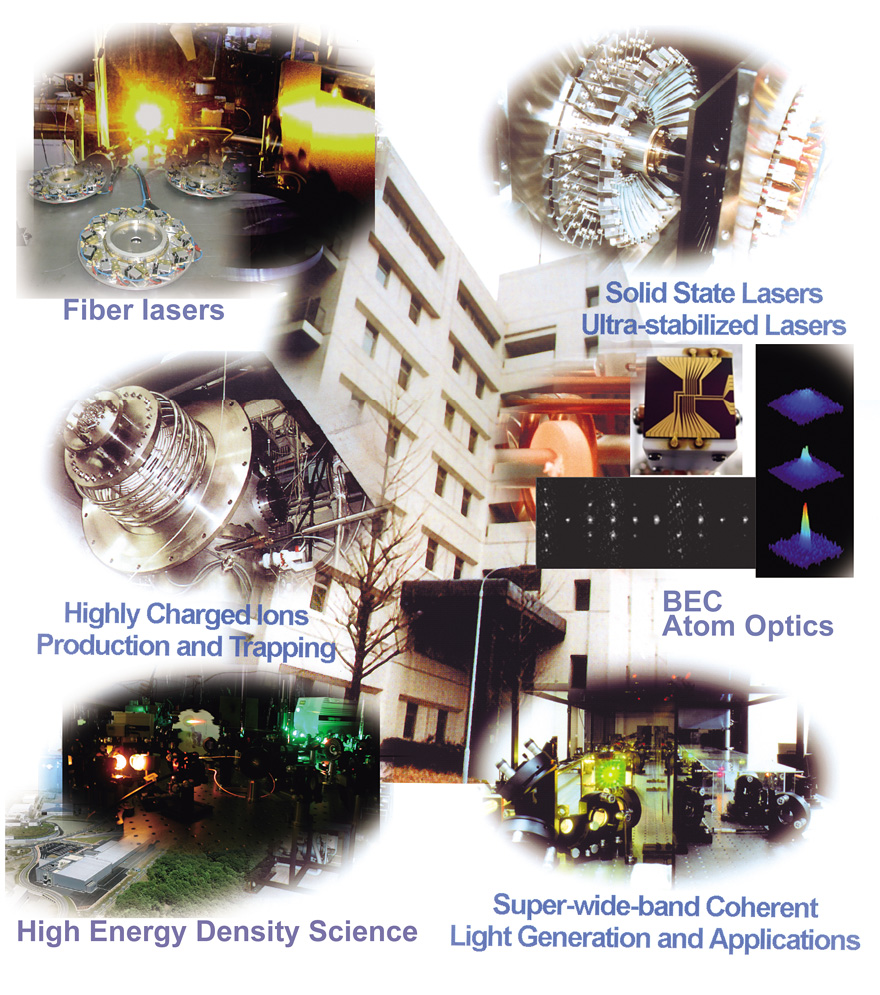
The research areas of the Institute for Laser Science have evolved throughout the years. The institute was established in 1978 to develop lasers for nuclear fusion. Later, the institute focused on the pursuit of extreme performance. Now, the institute is focusing on developing technologies that will lead to a brighter future.
Lasers are now used in all modern cutting-edge scientific research. The creation of high-quality laser light is essential for the progress of this cutting-edge applied scientific research. The goal of the research conducted by the Institute for Laser Science is to produce high-quality light within a wide frequency range that encompasses terahertz radiation, medium-and near-infrared light, visible light, ultraviolet light, vacuum-ultraviolet light, and X rays. We are developing a wide variety of light sources, including ceramic lasers, which have been said to represent a revolution in solid-state lasers, and fiber lasers that are capable of approaching theoretical performance limits. We are also working on unique applied research that uses these new forms of light. Our wide ranging fundamental and applied research includes research into atomic optics using ultracold atoms and molecules produced using laser cooling, research into extreme physical properties using high-output lasers, and multivalent ion research in which atomic states in the vacuum-ultraviolet to X-ray bandwidths are examined.

In addition, the institute gathers a wide range of research collaborators from within Japan and abroad who specialize in a variety of different optics fields. A variety of research groups conduct joint research with each other and exchange members while researching a wide range of topics that includes crystal optics, atomic physics, the research and development of laser technology and high quality optical elements, gravitational-wave astronomy, experimental astronomy, nuclear fusion energy development, high-energy accelerator development, and large-scale research that includes research into X-ray free-electron lasers.
Additionally, the institute manages an archive website for laser and optics academic journals and serves as a base for the dissemination of information in these fields. In the field of education, the institute is developing new types of education programs and actively providing optics education both within and outside the university.
You can visit this site to view research introductions, and the like.